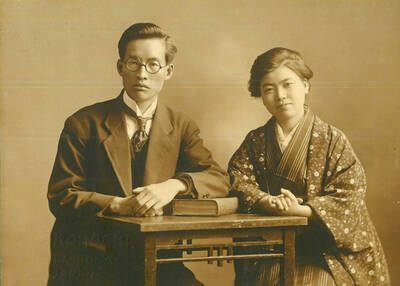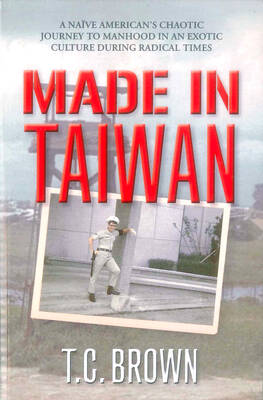Glossy fashion magazines are getting competition from Internet fashion blogs that are not only cheaper but also faster.
Before new trends from the catwalks and the streets arrive on the pages of the fashion magazines, they already are posted on the Internet. From tips on the hippest accessories to introductions of new artists and designers and styling tips for the perfect look, nearly everything can be found in fashion blogs.
As fashion is an international phenomenon, many blogs are written in English. But the online community Myspace also offers sites in other languages — www.myspace.com/laufsteg for German-speakers, for example.
Myspace also goes on the hunt for new trends on the streets of Mexico City with blogger Yvan Rodic, who’s well-known as a Face Hunter in the world of fashion blogs. Rodic, a trend spotter, travels worldwide photographing people and reporting at his site www.facehunter.blogspot.com. Eccentric street looks from London, Stockholm and Moscow are ranked at his street style blog. Currently, models featured there wear royal blue drainpipe jeans together with loose bomber jackets or combine patterned leggings with loud T-shirts.
If that’s too shrill, check out the address thesartorialist.blogspot.com. Founder Scott Schuman has made a name for himself internationally with the site. Magazines such as Vogue, Vanity Fair and Esquire regularly report on the looks that he captures on the street and reports on in his blog. The trends, recorded on camera, look more grown up and classic than those presented on Face Hunter. Readers learn through commentaries and interviews conducted in English where the featured people buy their clothes and what style rules they follow.
The blog stilinberlin.blogspot.com wants to prove that Germany is not inferior compared to other countries in fashion terms. Users can click through individual sections of the city and ask where people are more progressive. There are also blogs that are particular to the German cities of Hamburg and Munich.
The Hamburg site is at hh-streetstyle.blogspot.com, while the Munich site is www.styleclicker.net. Anyone looking for trends in Reykjavik, Buenos Aires or Toronto, need only click through the links available at the city sites.
Not all Web sites present only colorful pictures. At the blog styleranking.de readers can find out about the trends in the US, including a current one in which women pull their wedding dress through dirt for a photo shoot. The contents are aimed at a young audience and are intelligibly written and entertaining.
Those who like something just as informative, but less playful, should have a look at the blog modepilot.de. This is a place to get informed about categories such as accessories, fashion and art, fashion and film, jewelry exhibits, fashion photography and the extraordinary looks of the women in the television series and movie Sex and the City.
Fashion as a gateway to art is how the site F&Art (fartguide.blogspot.com) sets itself apart. Blogger Mahret Kupka introduces avant-garde designers such as Kris van Assche and Haider Ackermann — partially in English and partially in German — discussing things such as photography exhibits.
Equally as high a standard is being set in fashion coverage by American Diane Pernet. The style icon writes the blog www.ashadedviewonfashion.com, which is about fashion as a cultural phenomenon. She conducts interviews with up-and-coming fashion designers and takes a peak behind the scenes at fashion events and fashion-film festivals.
Those who find that too serious can turn to the English-language Web site scoop.starstyle.com where fashion and gossip is celebrated. Whether the topic is the Cannes Film Festival, LA fashion week or Oscar night, the Web site is dedicated to reporting who wore what when — and sometimes how much the celebrity paid for the clothes.
Internet users who want to get involved in the trend can turn to a brand new form of fashion blog: a network that invites users to present their own look to a worldwide audience. The concept has been applied at the Web site ilikemystyle.net since December, 2007. Users can post pictures of themselves, write a description of what they are wearing and let others evaluate their outfit. If it’s any good, they’ll receive some positive feedback such as, “I love it,” or “Awesome.”
Women with a weakness for shoes should take a look at www.shoewawa.com where they can look not only for high heels or peep toes, but also amuse themselves by checking out the ugly-shoe-of-the-week feature in which the author lampoons badly styled shoes. Users also can ask the blogger for styling tips and pose questions about particular types of shoes.

Aug. 25 to Aug. 31 Although Mr. Lin (林) had been married to his Japanese wife for a decade, their union was never legally recognized — and even their daughter was officially deemed illegitimate. During the first half of Japanese rule in Taiwan, only marriages between Japanese men and Taiwanese women were valid, unless the Taiwanese husband formally joined a Japanese household. In 1920, Lin took his frustrations directly to the Ministry of Home Affairs: “Since Japan took possession of Taiwan, we have obeyed the government’s directives and committed ourselves to breaking old Qing-era customs. Yet ... our marriages remain unrecognized,

During the Metal Ages, prior to the arrival of the Dutch and Chinese, a great shift took place in indigenous material culture. Glass and agate beads, introduced after 400BC, completely replaced Taiwanese nephrite (jade) as the ornamental materials of choice, anthropologist Liu Jiun-Yu (劉俊昱) of the University of Washington wrote in a 2023 article. He added of the island’s modern indigenous peoples: “They are the descendants of prehistoric Formosans but have no nephrite-using cultures.” Moderns squint at that dynamic era of trade and cultural change through the mutually supporting lenses of later settler-colonialism and imperial power, which treated the indigenous as

An attempt to promote friendship between Japan and countries in Africa has transformed into a xenophobic row about migration after inaccurate media reports suggested the scheme would lead to a “flood of immigrants.” The controversy erupted after the Japan International Cooperation Agency, or JICA, said this month it had designated four Japanese cities as “Africa hometowns” for partner countries in Africa: Mozambique, Nigeria, Ghana and Tanzania. The program, announced at the end of an international conference on African development in Yokohama, will involve personnel exchanges and events to foster closer ties between the four regional Japanese cities — Imabari, Kisarazu, Sanjo and

By 1971, heroin and opium use among US troops fighting in Vietnam had reached epidemic proportions, with 42 percent of American servicemen saying they’d tried opioids at least once and around 20 percent claiming some level of addiction, according to the US Department of Defense. Though heroin use by US troops has been little discussed in the context of Taiwan, these and other drugs — produced in part by rogue Chinese Nationalist Party (KMT) armies then in Thailand and Myanmar — also spread to US military bases on the island, where soldiers were often stoned or high. American military policeman